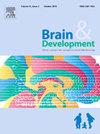Structural brain alterations in persistent developmental stuttering: a whole-brain voxel-based morphometry (VBM) analysis of grey and white matter
IF 1.3
4区 医学
Q4 CLINICAL NEUROLOGY
引用次数: 0
Abstract
Objective
Persistent developmental stuttering (PDS), also known as childhood-onset speech fluency disorder, is characterized by involuntary disruptions in normal speech fluency, such as sound repetitions, prolongations, and silent pauses. Although structural neuroimaging techniques, particularly voxel-based morphometry (VBM), have been widely used to explore brain abnormalities in PDS, the precise brain regions predominantly affected remain unclear. This study aimed to investigate grey matter (GM) and white matter (WM) volumetric differences in adults with PDS compared to fluent speakers.
Methods
Magnetic resonance imaging (MRI) scans were obtained from 15 adults with PDS and 15 fluent control participants matched for age, sex, education, and hand preference. Whole-brain VBM analysis was conducted to assess GM and WM volume differences between the two groups.
Results
Compared to fluent speakers, adults with PDS demonstrated reduced WM volume in the cerebellum. GM alterations included increased volumes in the right postcentral gyrus and the left middle temporal gyrus (MTG), while decreased volumes were observed in the left superior frontal gyrus (SFG), bilateral paracentral lobule, right cuneus, and right cerebellum.
Conclusion
These findings provide evidence of both grey and white matter abnormalities in adults with PDS, highlighting the involvement of specific cortical and subcortical regions. The results support the significance of structural brain differences in understanding the neurobiological basis of persistent stuttering.
持续性发育性口吃的脑结构改变:灰质和白质的全脑体素形态学分析
持续性发展性口吃(PDS),也被称为儿童期言语流畅障碍,其特征是正常言语流畅性的不自觉中断,如声音重复、延长和沉默停顿。尽管结构神经成像技术,特别是基于体素的形态测量(VBM),已被广泛用于探索PDS的大脑异常,但主要受影响的精确大脑区域仍不清楚。本研究的目的是研究成人半失语症患者与流利说话者相比灰质(GM)和白质(WM)体积的差异。方法对15名成年PDS患者和15名年龄、性别、教育程度和手部偏好相匹配的流利对照者进行磁共振成像(MRI)扫描。全脑VBM分析评估两组间GM和WM体积差异。结果与说流利英语的人相比,患有PDS的成人小脑WM体积减少。GM改变包括右侧中央后回和左侧颞中回(MTG)体积增加,而左侧额上回(SFG)、双侧中央旁小叶、右侧楔叶和右侧小脑体积减少。结论:这些发现为成人PDS患者的灰质和白质异常提供了证据,突出了特定皮层和皮层下区域的参与。研究结果支持了大脑结构差异对理解持续性口吃的神经生物学基础的重要性。
本文章由计算机程序翻译,如有差异,请以英文原文为准。
求助全文
约1分钟内获得全文
求助全文
来源期刊

Brain & Development
医学-临床神经学
CiteScore
3.60
自引率
0.00%
发文量
153
审稿时长
50 days
期刊介绍:
Brain and Development (ISSN 0387-7604) is the Official Journal of the Japanese Society of Child Neurology, and is aimed to promote clinical child neurology and developmental neuroscience.
The journal is devoted to publishing Review Articles, Full Length Original Papers, Case Reports and Letters to the Editor in the field of Child Neurology and related sciences. Proceedings of meetings, and professional announcements will be published at the Editor''s discretion. Letters concerning articles published in Brain and Development and other relevant issues are also welcome.
 求助内容:
求助内容: 应助结果提醒方式:
应助结果提醒方式:


